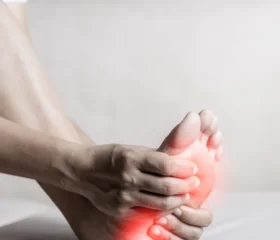Signs and Symptoms

Early Detection
It is important to know the signs and symptoms of diabetes to detect the disease early and get it under control before any irreversible damage is done to the body. Recent studies indicate that early detection and treatment of diabetes can decrease the chance of developing complications from the disease.
Diabetes has often been referred to as a “silent disease” for two reasons: 1) Many people with Type 2 diabetes walk around with symptoms for many years, but are not diagnosed until they develop a complication of the disease, such as blindness, kidney disease, or heart disease; 2) There are no specific physical manifestations in individuals with diabetes. Therefore, unless a person chooses to disclose their disease, it is possible that friends and even family members may be unaware of a person’s diagnosis.
Diabetes is detected through a blood glucose test, and experts recommend that Americans over age 35 with a family history of diabetes or other risk factors (such as being overweight) should consider asking their physicians for a blood test annually. The earlier diabetes is detected, the earlier complications may be treated and/or prevented.
Common signs/symptoms
(for Type 1, Type 2, Type 1.5, Pre-diabetes, Gestational Diabetes)
Unexplained weight loss is one of the common type 1 diabetes symptoms in women. With this type of diabetes, the body is unable to use all the calories that the food provides, even though the person follows a healthy diet. Due to this, the person loses weight, even without trying to do so.
Another symptom that is seen in both types of diabetes is the feeling the need to visit the washroom frequently. The body tries to get rid of the excess sugar through the urine and hence, one feels the need to urinate within very short periods of time.
As excessive urination not only eliminates the extra sugar present in the body, but also large amounts of water, the individual may suffer from the problem of dehydration. Due to this, she may experience excessive thirst and urination throughout the day which is another symptom of diabetes in women.
One of the typical type 2 diabetes symptoms in women is excessive eating i.e. polyphagia. When a person has this type of diabetes, the level of insulin is very high in the body. As insulin aids in stimulating hunger, too much of insulin in the body may make the person feel hungry and also make her eat more.
Another symptom of diabetes that is seen in women is the occurrence of skin infections as well as vaginal yeast infection. Women with diabetes may also experience urinary tract infections very frequently.
Sexual dysfunction is also observed as a common symptom of diabetes in women. Women with diabetes may experience pain or discomfort during sexual intercourse, reduced vaginal sensitivity and vaginal lubrication, as well as an inability to achieve orgasm.
Apart from these physical symptoms, some psychological symptoms may also be seen in women affected by diabetes. They may experience extreme lethargy, agitation, and sometimes may also feel irritable without any reason.
In case of gestational diabetes, no overt sign may occur. However, if a pregnant woman has high blood pressure, there are chances that she is suffering from gestational diabetes
Risk Factors
Type 1 Diabetes
Family history of type 1 diabetes. Having a family history of the disease increases the chance that a person will have islet cell antibodies, but it does not predict that a person will have the disease. Only about 10% to 15% of people with type 1 diabetes have a family history of the disease.
- If the father has the disease, a child has a 6% risk of developing it.
- If a sibling has the disease, a child has a 5% risk of developing it.
- If the mother has the disease, a child has a 2% risk of developing it.
- If an identical twin has the disease, the other twin has a 30% to 50% risk of developing it.
- If a parent and one sibling have the disease, a child has a 30% risk of developing it.
- Race: White people have a greater risk for developing type 1 diabetes than black, Asian, or Hispanic people.
- Presence of islet cell antibodies in the blood. People who have both a family history of type 1 diabetes and islet cell antibodies in their blood are likely to develop the disease at some time.
Type 2 Diabetes
- Age greater than 45 years old
- Diabetes during a previous pregnancy
- Excess body weight (especially around the waist)
- Family history of diabetes
- Given birth to a baby weighing more than 9 pounds
- HDL cholesterol under 35
- High blood levels of triglycerides, a type of fat molecule (250 mg/dL or more)
- High blood pressure (greater than or equal to 140/90 mmHg)
- Impaired glucose tolerance
- Low activity level
- Poor diet




